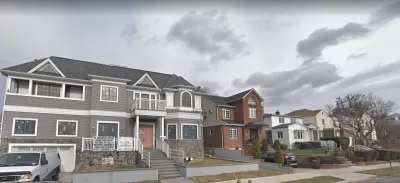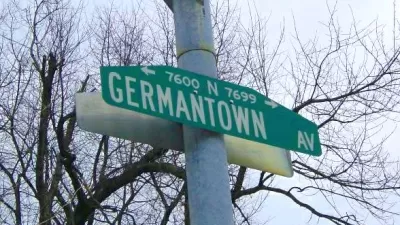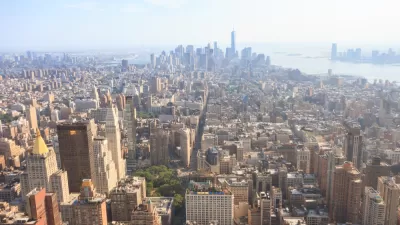A rezoning process for a neighborhood in Queens will allow homes to be built wider and deeper. Supporters say the space is needed for large families.

"Parts of Kew Gardens Hills are doubling down on single-family home zoning and wider, deeper houses — bucking a national trend amid an affordable housing crunch in New York and beyond," reports Savannah Jacobson.
The Kew Gardens Hills plan will allow about 400 single-family homes to build out horizontally, and it already has approval from Community Board 8, which applied for the rezoning, as well as Borough President Melinda Katz and the City Planning Commission. The plan still requires approval from the City Council and Mayor Bill de Blasio, which is "all but guaranteed."
As Jacobson notes, the plan stands in stark contrast to the trend toward allowing new density to accommodate growth in cities like Minneapolis and states like Oregon and California.
The Kew Gardens Hills plan takes the poosite approach, according to Jacobson. "Local Councilmember Rory Lancman (D-Queens) supports the Kew Gardens Hill plan, which will allow the single-family homes to build out horizontally – even as he penned an op-ed calling for denser housing in the city." By Lancman's reasoning, larger homes will accommodate the larger families that live in the neighborhood.
Similar arguments for downzoning as a positive environmental tool were also made recently in support of a growth cap approved by the city of Lakewood in Colorado.
FULL STORY: QUEENS NEIGHBORHOOD FIGHTS FOR BIGGER SINGLE-FAMILY HOMES, BUCKING U.S. TREND

Planetizen Federal Action Tracker
A weekly monitor of how Trump’s orders and actions are impacting planners and planning in America.

Maui's Vacation Rental Debate Turns Ugly
Verbal attacks, misinformation campaigns and fistfights plague a high-stakes debate to convert thousands of vacation rentals into long-term housing.

Restaurant Patios Were a Pandemic Win — Why Were They so Hard to Keep?
Social distancing requirements and changes in travel patterns prompted cities to pilot new uses for street and sidewalk space. Then it got complicated.

In California Battle of Housing vs. Environment, Housing Just Won
A new state law significantly limits the power of CEQA, an environmental review law that served as a powerful tool for blocking new development.

Boulder Eliminates Parking Minimums Citywide
Officials estimate the cost of building a single underground parking space at up to $100,000.

Orange County, Florida Adopts Largest US “Sprawl Repair” Code
The ‘Orange Code’ seeks to rectify decades of sprawl-inducing, car-oriented development.
Urban Design for Planners 1: Software Tools
This six-course series explores essential urban design concepts using open source software and equips planners with the tools they need to participate fully in the urban design process.
Planning for Universal Design
Learn the tools for implementing Universal Design in planning regulations.
Heyer Gruel & Associates PA
JM Goldson LLC
Custer County Colorado
City of Camden Redevelopment Agency
City of Astoria
Transportation Research & Education Center (TREC) at Portland State University
Jefferson Parish Government
Camden Redevelopment Agency
City of Claremont





























